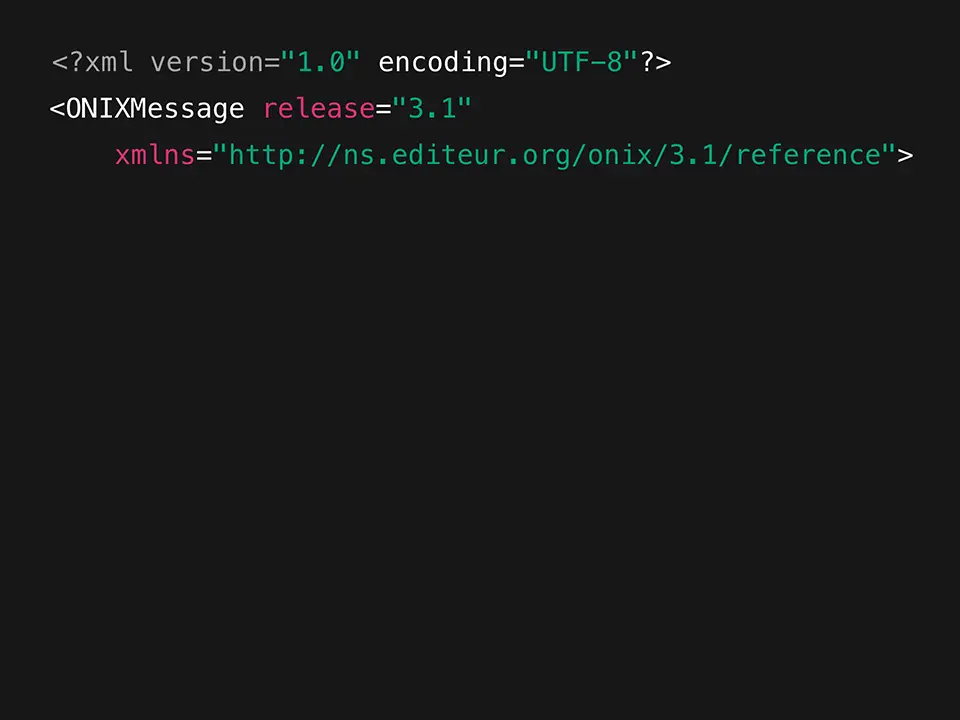
ONIX is often relegated to the background—used merely to transmit catalogue data to retailers. But in the digital age, that metadata holds untapped potential. From improving discoverability and SEO, to powering automated content workflows and enhancing user experience, ONIX offers publishers a richer, more dynamic way to connect with readers. This post explores how ONIX can evolve from passive data to strategic fuel for websites, marketing, and commerce.
What Is ONIX—and Why Should Publishers Care?
ONIX (ONline Information eXchange) is the trusted XML standard for sharing detailed metadata—ISBNs, formats, audience, keywords, rights information, and more—between publishers and industry partners like wholesalers, distributors, and libraries. While many publishers associate ONIX strictly with external distribution, there’s a growing opportunity to harness that data internally to:
- Automate book page generation
- Improve site search and SEO
- Streamline marketing workflows
- Enable real-time e-commerce and analytics-driven insights
The Missed Opportunity
Too often, ONIX ends its lifecycle once it reaches retailers or industry databases. Publishers miss the chance to repurpose it for:
- Direct-to-consumer commerce
- Metadata-driven storytelling
- Editorial workflows
- Personalized reader experiences
- This isn't just a missed technical opportunity—it’s a strategic one.
Unlocking Value: Five Practical Applications
1. Dynamic Book Pages
Use ONIX data to automatically generate content-rich pages—blurb, cover art, formats, key dates, author info—ensuring consistency, accuracy, and reduced editorial duplication.
2. Improved Discoverability & SEO
ONIX keywords, subject codes, and audiences can fuel smarter site search, richly interlinked content (e.g. series or author backlists), and better search engine visibility.
3. Direct-to-Consumer E-commerce
Pair ONIX with your commerce engine to ensure buying options reflect real-time availability, formats, prices, and geographic rights—reducing friction between discovery and purchase.
4. Marketing Automation
Feed ONIX into newsletters, launch campaigns, and author spotlights—automating release calendars, formats, book categories, and images, freeing marketing teams from manual data entry.
5. Analytics & Reporting
Monitor which ONIX-powered metadata is engaging users—whether it’s keywords, formats, or subjects—and optimise entries for stronger performance over time.
Case Study: Pan Macmillan
Line Industries helped Pan Macmillan unlock ONIX’s value by integrating it into a new Jamstack-powered platform—built with Gatsby and Kentico Kontent—powered by rich editorial workflows and metadata automation. Key highlights:
- ONIX Integration: Book and author data were parsed directly from ONIX feeds and internal APIs, bypassing slower API calls and streamlining build performance.
- Scale & Speed: The largest site build renders over 14,000 pages, harnessing caching strategies, scheduled tasks, and custom plugins to manage performance across complex data inputs.
- Results: Replatforming to Jamstack architecture delivered an 8× faster load time and a 25% increase in conversion rates—boosting SEO, editor agility, and user experience.
This case demonstrates how integrating ONIX at the core of a digital platform can yield measurable improvements in speed, discoverability, and ease of content management.
Getting Started: A 4-Step Playbook
Audit Your ONIX Feed
Ensure fields like keywords, audience, subject codes, rights, ISBNs are complete, accurate, and up-to-date.
Identify Digital Use Cases
Decide what’s most urgent—SEO, direct sales, marketing automation, or content generation—and target that first.
Architect for Integration
Choose a platform that can handle structured metadata—whether Jamstack frameworks like Gatsby or custom CMS setups—designed for dynamic ONIX feeding.
Partner with Metadata-Savvy Developers
Work with teams who understand both publishing workflows and ONIX structure to deliver seamless integration and editorial autonomy.
Conclusion & Next Steps
ONIX isn’t just a catalogue standard—it’s a repository of strategic metadata waiting to enhance every stage of your digital ecosystem. When harnessed effectively, it can drive performance, streamline workflows, and enrich reader discovery. If you're ready to transform your ONIX feed into a dynamic digital asset, we’d love to help.
Ready to unlock your ONIX data's potential? Get in touch and let's design a smarter, faster, more discoverable publishing platform together.
